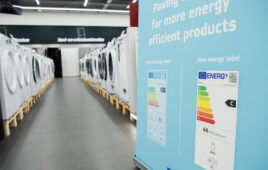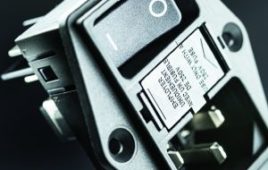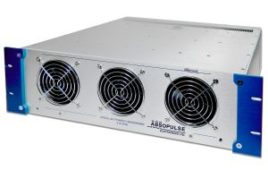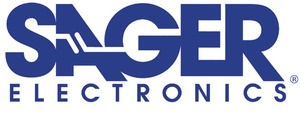Energy harvesting is a hot topic at the moment. The desire to save energy, create it at no cost or power devices virtually forever without needing a conventional power source has a certain appeal particularly for remote devices away from conventional power sources. A device “powered” by simple human movement have been around since before electronics – the automatic wristwatch. There are fraudulent web sites which try to persuade you to part with your money in return for the plans to build something that will supply all the electricity for your house from a simple piece of wire poking above it. However, there are real applications that do work.
Wind, solar energy and wave power are the common energy sources which most people have heard of but for the electronics designer there are some other interesting options particularly where only low power is required. A thermocouple generates a small amount of electricity from a temperature difference and while the materials of a thermocouple are chosen for accuracy, using other materials can produce a thermoelectric generator that can produce more power. Look up the Seebeck or Peltier effect to find out more.
The energy produced by a thermoelectric source will be variable, depending on the temperature difference and load, and the voltage will often be at an inconvenient voltage. Linear Technology make some ICs to help with the problem of using low level, low voltage harvested energy such as the LTC3107/8/9, as do other manufacturers such as Texas Instruments, Maxim and ST.
The LTC3108 for example, is aimed at totally battery free systems such as remote transmitters for telemetry. It claims to be able to start with voltages as low as 20mV. It uses the small input voltage as the supply voltage for an oscillator in conjunction with the transformer. Efficiency can be quite poor – as low as 5% depending on the transformer turns ratio and input voltage but as the electricity is “free”, efficiency isn’t a major concern. You certainly won’t be overheating anything – the power output rarely exceeds 15mW so the power wasted in heat will not be large.
You can use pretty much anything that will generate a small voltage by adjusting the transformer turns ratio to suit, provided the energy source can deliver the current required. A typical application would be for a device that only requires significant current in short bursts so between current bursts the energy is accumulated in a capacitor for later. Energy sources could be thermoelectric generators (TEGs), thermopiles or even a photodiode in photovoltaic mode. The storage capacitor is there to provide the high current that may be required for a short period e.g. tens of milli-amps for an RF transmitter.
Other devices such as the LTC3588-1 are for higher voltage, higher impedance power sources such as piezo devices.
Piezoelectric devices can generate high voltages so the internal circuitry is quite different to the LT3108 and in essence a lot simpler. You could use a discrete bridge rectifier and a micropower switching regulator instead – the LTC3588-1 simply integrates all the components into one device. The piezo could be in a shoe, a seat or anywhere that will be subjected to a varying pressure. You can also add some weight to a piezo and use movement rather than varying pressure to generate the electricity – the weight will apply pressure to the piezo as it moves provided the movement is varying i.e. not a simple constant velocity but including some acceleration/deceleration or change of direction.
Filed Under: Energy management + harvesting, Power Electronic Tips




